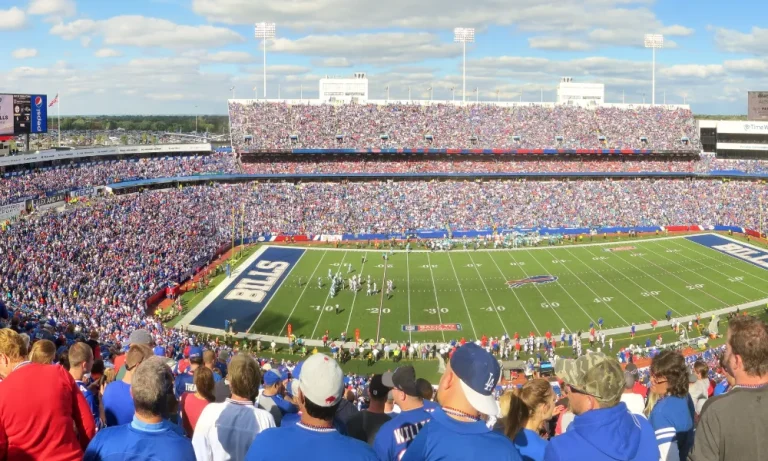What does OTA mean in Football?
Do you ever wonder what OTA means in football? If you’re a fan or player, you may have come across this acronym and wondered about its significance. Well, you’re in the right place! In this article, we will dive into the world of OTA (Organized Team Activities) and explore why it holds immense importance in football training and preparation.
What are OTA sessions?
OTA sessions, which stands for Organized Team Activities, are a crucial component of football training and preparation. These sessions are structured practices that allow teams to come together and work on various aspects of their game. The primary purpose of OTA sessions is to facilitate team development and player evaluation.
During OTA sessions, players engage in drills, exercises, and simulated game scenarios to improve their skills and understanding of the game. These activities focus on refining techniques, enhancing physical conditioning, and honing teamwork. By participating in these organized activities, teams can build cohesion, develop strategies, and establish a solid foundation for the upcoming season.
The importance of OTA sessions cannot be overstated. These sessions provide an opportunity for players to showcase their abilities and compete for starting positions. Coaches can assess player performance, identify strengths and weaknesses, and make informed decisions regarding team composition and player roles. The evaluation process during OTA sessions helps teams create a competitive environment and select the best players to achieve success on the field.
How do OTA sessions work?
When it comes to OTA sessions, it’s important to understand their structure and duration. These sessions typically take place over several weeks, allowing teams to gradually build their skills and prepare for the upcoming season. Each week, teams may have multiple OTA sessions, providing ample opportunity for practice and improvement.
During OTA sessions, players engage in different phases of training. The sessions often begin with individual drills, focusing on specific skills such as passing, catching, and tackling. These drills allow players to refine their techniques and develop their individual abilities.
As the sessions progress, teams move on to team drills, where players work together to simulate game scenarios. These drills involve offensive and defensive units practicing plays, formations, and strategies. Through these team drills, players learn to communicate effectively, anticipate their teammates’ actions, and execute their roles within the team structure.
Who participates in OTA sessions?
OTA sessions involve various players and personnel who play significant roles in the football team. Firstly, the players themselves are the primary participants. This includes both seasoned veterans and rookies, as OTA sessions provide valuable training opportunities for players of all experience levels. These sessions allow players to improve their skills, showcase their abilities, and compete for starting positions.
In addition to the players, coaching staff and team personnel are actively involved in OTA sessions. Coaches lead the training sessions, providing guidance, instruction, and feedback to the players. They design the drills and exercises, tailor them to the team’s needs, and ensure that the sessions are productive and effective. Other team personnel, such as strength and conditioning coaches and medical staff, also play essential roles in supporting the players’ physical development and well-being during OTA sessions.
To participate in OTA sessions, players must meet certain eligibility criteria. For example, they must be under contract with the team and have signed necessary waivers and agreements. Additionally, players must adhere to league rules and regulations regarding participation in offseason activities. These criteria ensure that OTA sessions are conducted with authorized individuals and maintain the integrity of the training process.
What are the benefits of OTA sessions?
OTA sessions offer numerous benefits for players, coaches, and teams alike. For players, these sessions provide an opportunity to enhance their skills and improve their performance. Through focused drills and exercises, players can refine their techniques, increase their physical conditioning, and sharpen their football IQ. OTA sessions also allow players to showcase their abilities and compete for starting positions, motivating them to give their best effort and strive for excellence.
Coaches benefit from OTA sessions by having the chance to evaluate players in a structured environment. They can assess player strengths and weaknesses, identify areas for improvement, and make informed decisions about team composition and player roles. This evaluation process helps coaches create a competitive atmosphere and select the best players to achieve success on the field. Additionally, OTA sessions allow coaches to implement and refine team strategies, ensuring that players understand their roles and can execute plays effectively.
Team chemistry is another crucial aspect enhanced by OTA sessions. Through regular practice and interaction, players develop camaraderie, trust, and a shared sense of purpose. Building strong team chemistry is essential for effective communication, cohesive gameplay, and overall team success. OTA sessions provide the platform for players to bond, understand each other’s playing styles, and develop the necessary synergy to perform as a cohesive unit.
How do OTA sessions differ from other training activities?
OTA sessions differ from other football training activities, such as minicamps and preseason training, in several ways. While each of these activities serves a purpose in preparing for the upcoming season, OTA sessions have their unique features and objectives.
Firstly, OTA sessions are typically held during the offseason and are voluntary for players. This distinguishes them from mandatory minicamps and preseason training, which players are required to attend. The voluntary nature of OTA sessions allows players flexibility while still providing them with valuable training opportunities.
Another key difference is the focus of OTA sessions. These sessions primarily emphasize skill development, technique refinement, and playbook comprehension. They are designed to fine-tune individual skills and build team cohesion. In contrast, minicamps and preseason training often have a broader scope, including intense physical conditioning, playbook installation, and team-building exercises.
Additionally, OTA sessions have specific limitations and restrictions set by league regulations. These limitations aim to ensure player safety and prevent excessive physical contact during the offseason. For example, full-contact drills and live tackling are prohibited in OTA sessions, unlike in some minicamps and preseason training activities.
Are OTA sessions mandatory?
OTA sessions are not mandatory for players in the NFL. According to the league’s rules and regulations, players have the choice to participate in these sessions voluntarily. The NFL understands that players have individual circumstances and commitments that may prevent them from attending OTA sessions.
While OTA sessions are not mandatory, they are highly encouraged and considered crucial for player development and team preparation. Coaches and teams value the participation of players in OTA sessions as they provide opportunities to build chemistry, learn the playbook, and improve skills. Players who actively engage in OTA sessions often gain an advantage in terms of familiarity with team systems and building relationships with teammates and coaches.
However, it is important to note that players who choose not to attend OTA sessions may face consequences. By opting out, players miss out on valuable practice time and the chance to showcase their abilities to coaches. This may affect their standing within the team and potentially impact their playing time or role in the upcoming season. Additionally, not participating in OTA sessions can hinder a player’s ability to develop a strong rapport with teammates and fully grasp the team’s strategies and game plans.
What to expect from OTA sessions?
During OTA sessions, players can expect a variety of activities, drills, and goals that aim to enhance their skills, teamwork, and overall preparation for the upcoming season. These sessions provide valuable opportunities for individual and team development.
Typically, OTA sessions begin with warm-up exercises and stretching to prevent injuries and prepare the body for physical activity. Following the warm-up, players engage in position-specific drills, focusing on techniques, footwork, and agility. These drills aim to enhance fundamental skills and improve overall performance on the field.
Team-based activities are also an integral part of OTA sessions. This includes offensive and defensive drills, where players practice executing plays, understanding the playbook, and enhancing communication and coordination within their respective units. These team activities foster cohesion and help players develop a better understanding of their roles and responsibilities in different game situations.
The goals of OTA sessions are twofold. For players, the primary objective is to improve their individual skills, refine techniques, and gain a deeper understanding of the team’s playbook. OTA sessions provide an opportunity for players to showcase their abilities and compete for starting positions or increased playing time.
For teams, the main objective is to build chemistry, establish team identity, and create a cohesive unit. OTA sessions allow coaches to evaluate player performance, identify areas for improvement, and fine-tune strategies. By the end of OTA sessions, teams aim to have a solid foundation in terms of player development, teamwork, and overall readiness for the upcoming season.
What does OTA stand for in football?
OTA stands for “Organized Team Activities” in football, which are voluntary offseason practice sessions for players to prepare for the upcoming season.
Are OTA sessions mandatory for NFL players?
No, OTA sessions are not mandatory for NFL players. They have the choice to participate voluntarily.
When do OTA sessions typically take place?
OTA sessions are usually held during the offseason, after the NFL Draft and before training camp. They occur in the spring and early summer.
What is the purpose of OTA sessions?
The purpose of OTA sessions is to help players develop their skills, build team chemistry, and prepare for the upcoming season by practicing plays and learning the team’s playbook.
Can rookies participate in OTA sessions?
Yes, rookies are eligible to participate in OTA sessions. It provides them with an opportunity to familiarize themselves with the team, coaches, and systems before the regular season begins.
Conclusion
OTA sessions play a vital role in the world of football. From enhancing player skills to fostering team chemistry, these organized activities offer numerous benefits for both individuals and teams. As players and teams gear up for the upcoming season, it’s crucial to recognize and maximize the advantages of OTA sessions. So, embrace the opportunities, put in the hard work, and make the most of OTA to set yourself up for success in the football arena.





